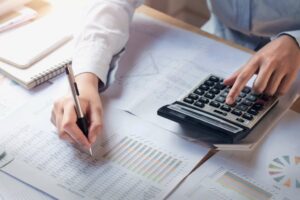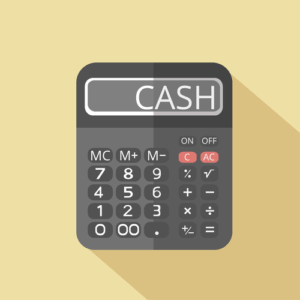
These are the assets that can be claimed as depreciable property when you file taxes if any of these are used by you for business or income production purposes. Managing fixed assets for tax and accounting purposes can be a challenging task. AssetAccountant is sophisticated fixed asset software that takes care of all of your fixed asset depreciation and leasing. Here at AssetAccountant, we have seen many implementations of the fixed asset depreciation software. Depreciable assets are subject to depreciation, while depreciable assets non-depreciable assets are not.
How can Taxfyle help?
This requires expertise and can introduce a level of subjectivity into financial reporting. Accurate and consistent valuation methods are essential to ensure that the financial statements provide a true and fair view of the company’s financial position. This article delves into the often-overlooked realm of assets that cannot be depreciated. While depreciation is expected for tangible assets with determinable valuable lives, certain assets fall outside this scope.
What Causes Assets to Depreciate?
Depreciation is a key accounting concept that reflects the reduction in value of an asset over time. It is essential for financial reporting as it affects net income and tax calculations. This section explores the core concepts of depreciation and the methods used to calculate it. Explore the unique treatment and significance of non-depreciable assets in accounting practices and tax regulations for informed financial decision-making. Although a business can use physical properties such as buildings, vehicles, furniture, and equipment for several years, they do not last forever.
Further Reading: Learn more about capital asset taxes

The intrinsic value of these items tends to increase over time, making depreciation an inappropriate accounting treatment. Instead, these assets are often revalued periodically to reflect their current market worth. Unlike depreciable assets, which can have their cost systematically allocated over their useful life, non-depreciable assets such as land and collectibles do not wear out or become obsolete. It denotes the process through which a company allocates the cost of a tangible asset over its useful life.
Understanding Other Comprehensive Income: Financial Reporting, Taxation, and Investor Implications
As a business owner or an accountant, it’s essential to understand income summary the different types of assets that a company can acquire. Depreciable assets, such as buildings and equipment, are subject to wear and tear and decrease in value over time. On the other hand, non-depreciable assets, like land and investments, typically do not lose value over time. While many business owners and accountants may focus primarily on depreciable assets, it’s important not to overlook the value that non-depreciable assets can bring to a business. In this section, we’ll explore the benefits of non-depreciable assets and how they can be a valuable resource for long-term success.

AUD CPA Practice Questions: Auditor Responsibilities for Laws and Regulations Compliance
Depreciable assets, such as machinery and vehicles, lose value over time and require careful accounting to reflect their diminishing worth. In contrast, non-depreciable assets, like land and certain intangible assets, maintain or even appreciate in value. This essay explores the key differences between these two asset categories, the importance of depreciation, and the various methods used to calculate it. By examining these concepts, businesses can better navigate their financial landscapes and make informed decisions regarding asset management. Several categories of assets are commonly excluded from depreciation calculations.
Always consult financial advisors or accountants to ensure that you’re applying the proper treatment for each asset type. While they are tangible, their value can appreciate over time, placing them in the non-depreciable asset category. This article dives into the essentials of what assets cannot be depreciated, providing clarity on which assets fall into this category and their impact on financial statements. Tangible assets can be seen, touched, and easily quantified in a financial sense. They often require maintenance and incur costs related to their upkeep and operation.
- Additionally, depreciation affects a company’s tax liability, as it is a non-cash expense that reduces taxable income.
- Land, for example, has an indefinite useful life and does not experience physical deterioration, making it ineligible for depreciation.
- Its value typically appreciates or remains stable, making it ineligible for depreciation.
- Depreciable assets are subject to depreciation, while non-depreciable assets are not.
- Unlike depreciable assets that need to be replaced or upgraded every few years, non-depreciable assets can last for several years, providing businesses with a consistent return on investment.
- Careful planning around these assets is necessary to assess their complete tax impact.
This can include physical assets like buildings or machinery, intangible assets like patents or copyrights, or financial assets like cash or investments. It’s important to note that improvements made to land, such as paving or landscaping, are depreciable assets. Accurate asset classification is crucial for proper financial reporting and ensures you claim only eligible deductions. Misclassifying a non-depreciable asset could distort financial statements or trigger IRS penalties. Depreciation allows you to allocate the cost of an asset over its useful life, spreading the deduction across multiple accounting periods.
- Without this expense, a company’s net income appears higher, which can be attractive to investors and analysts.
- Among these concepts, non-depreciable assets stand out as a category that does not diminish in value due to usage or time.
- Amortization and depreciation both spread out the cost of an asset over its useful life.
- Tracking these values enables businesses to maintain financial transparency and robustness.
- Depreciation allows businesses to allocate the cost of a tangible asset over its useful life.
- Instead, they are capitalized and expensed over time as the benefits are realized, aligning with matching principles in accounting.

This accounting method acknowledges that assets such as machinery, equipment, and buildings gradually lose value over time due to wear and tear, obsolescence, or other factors. By spreading out the cost of these assets over their expected lifespan, businesses can more accurately reflect their actual economic value on financial statements. When it comes to running a business, acquiring non-depreciable assets can be a valuable addition to your long-term success. These assets are not subject to depreciation, meaning https://www.bookstime.com/ they will retain their value over time and can provide a reliable source of income or added value to your business.